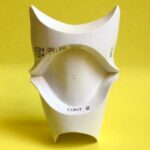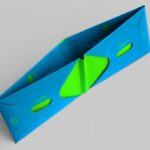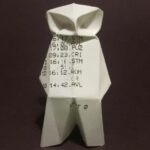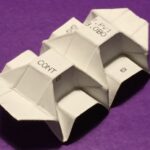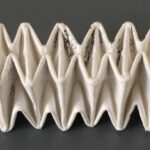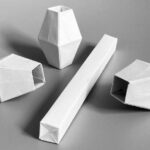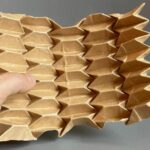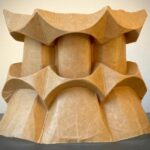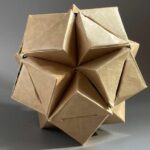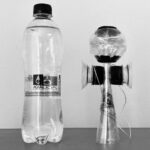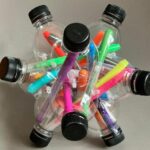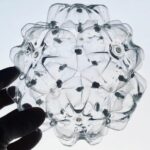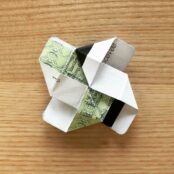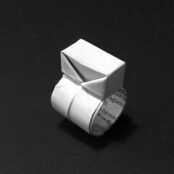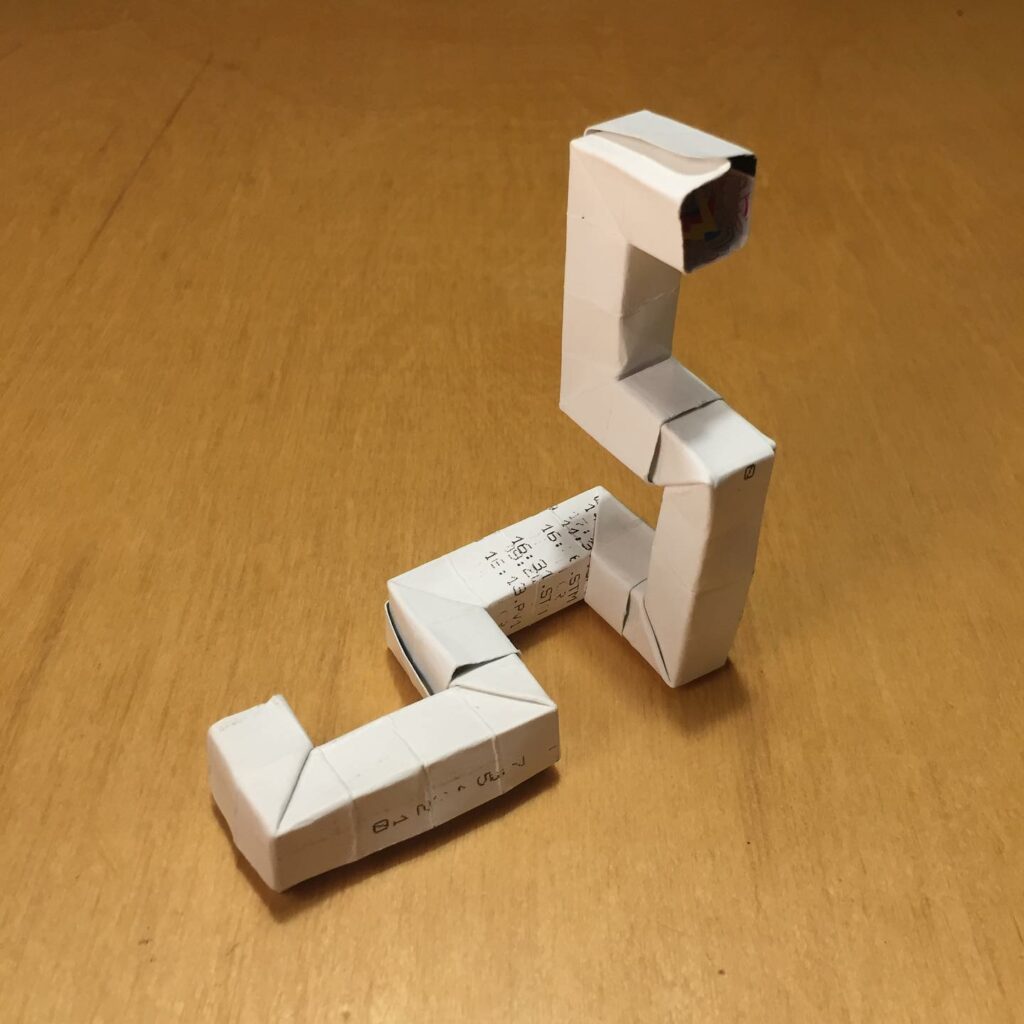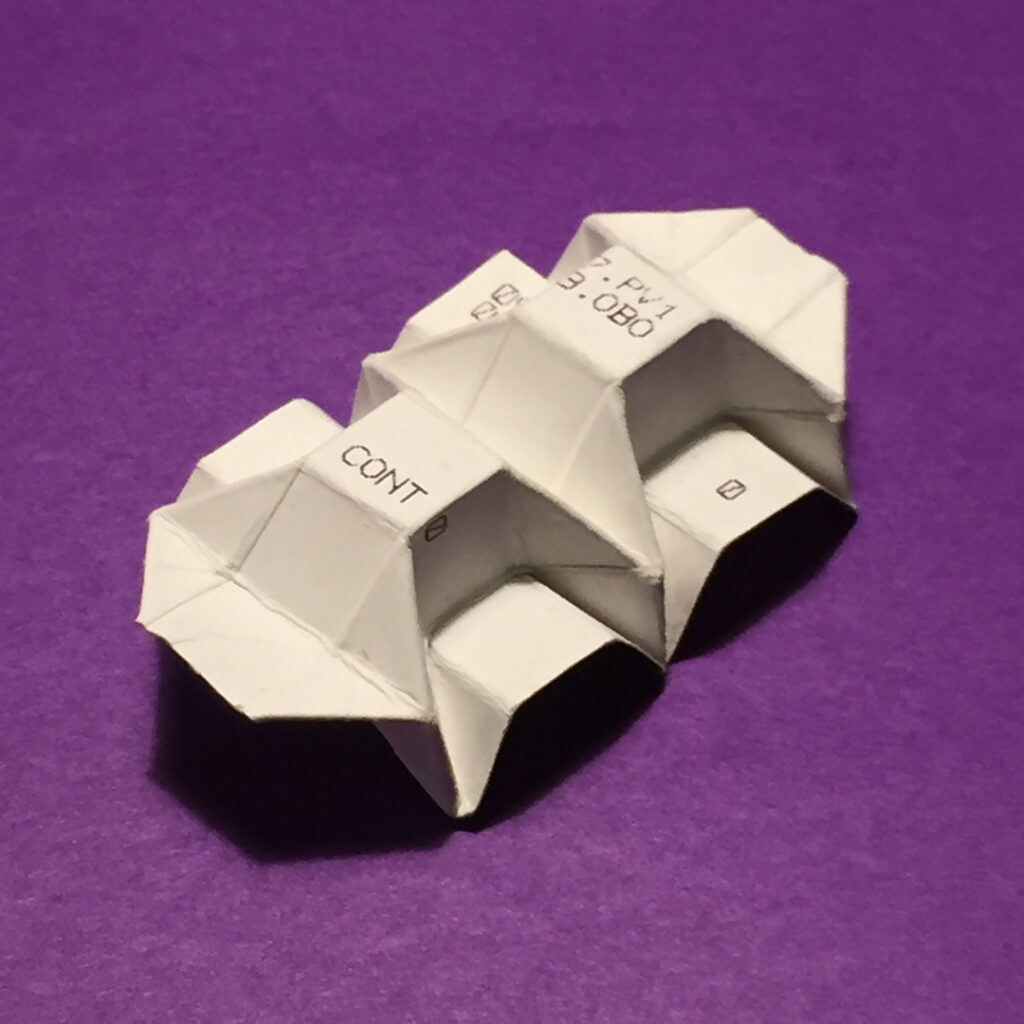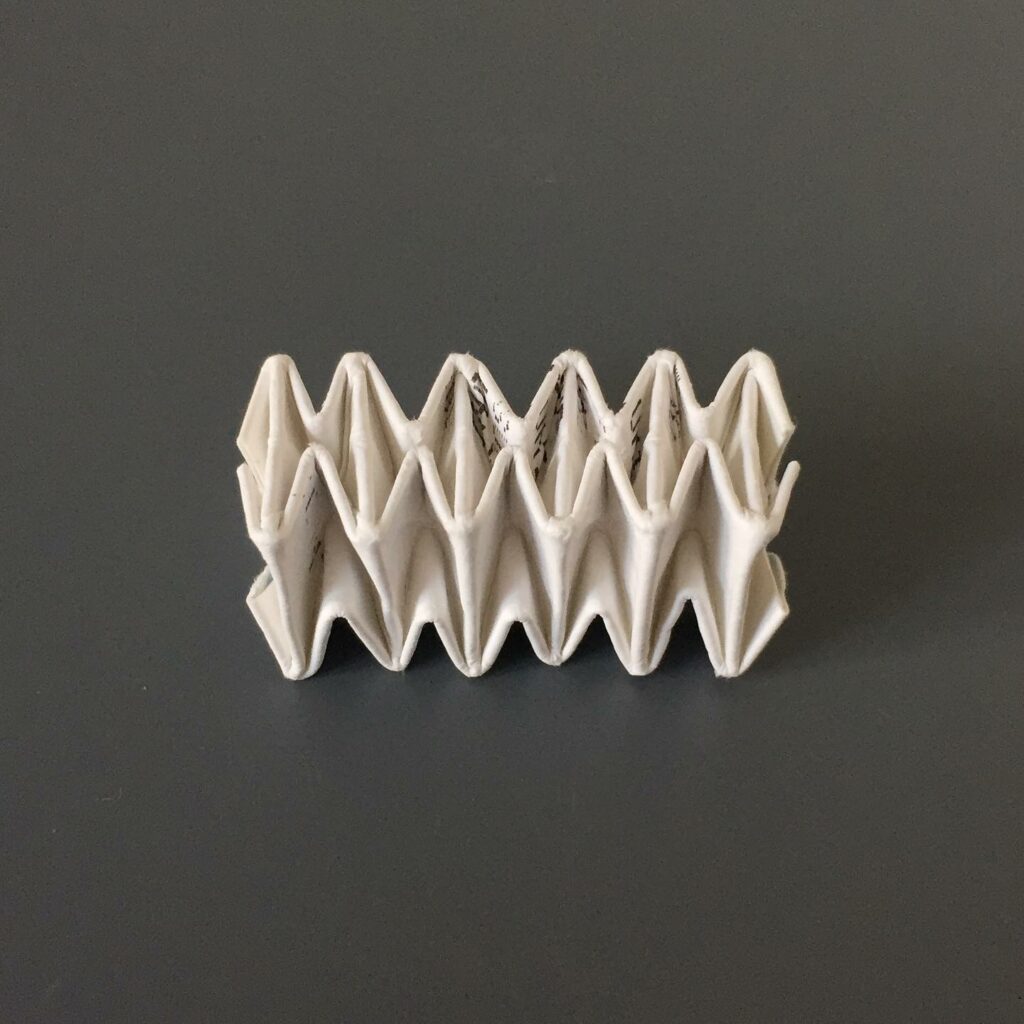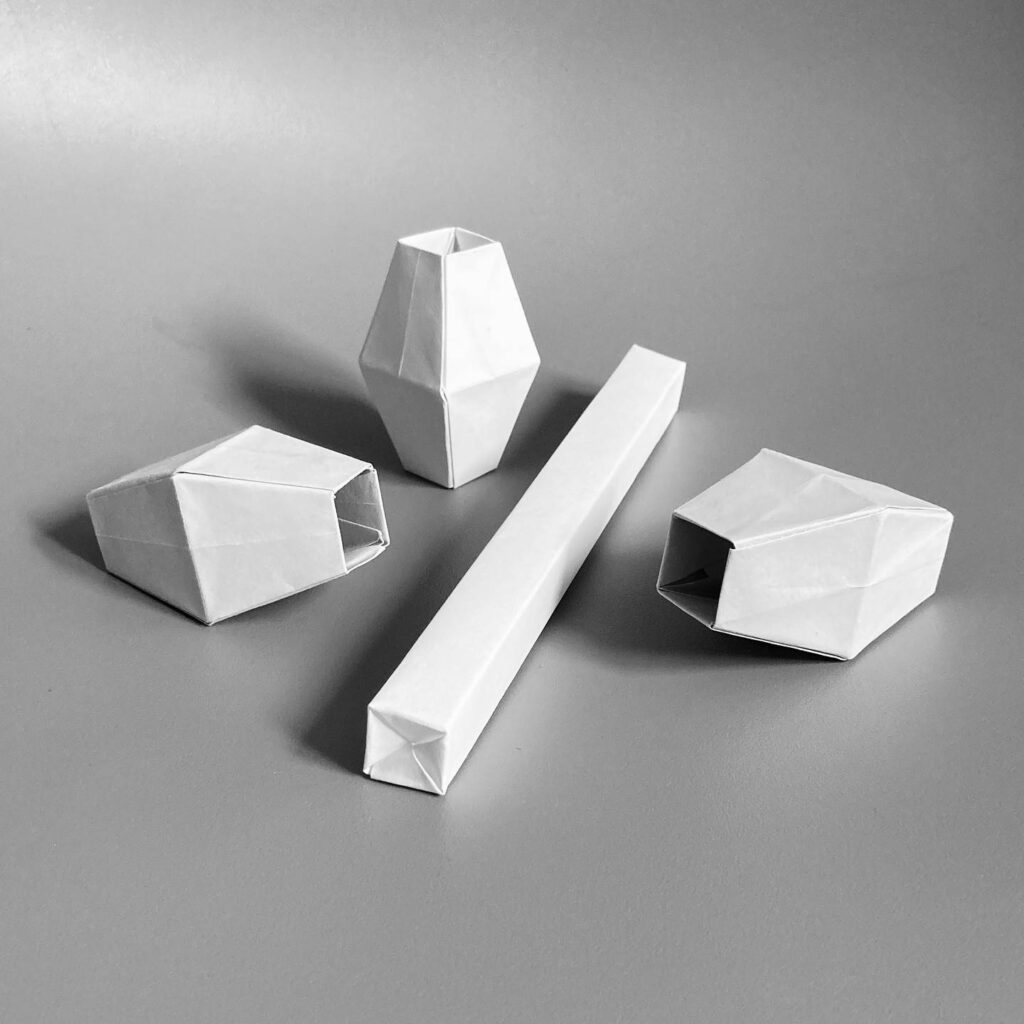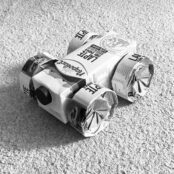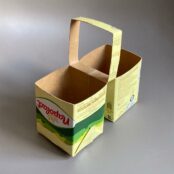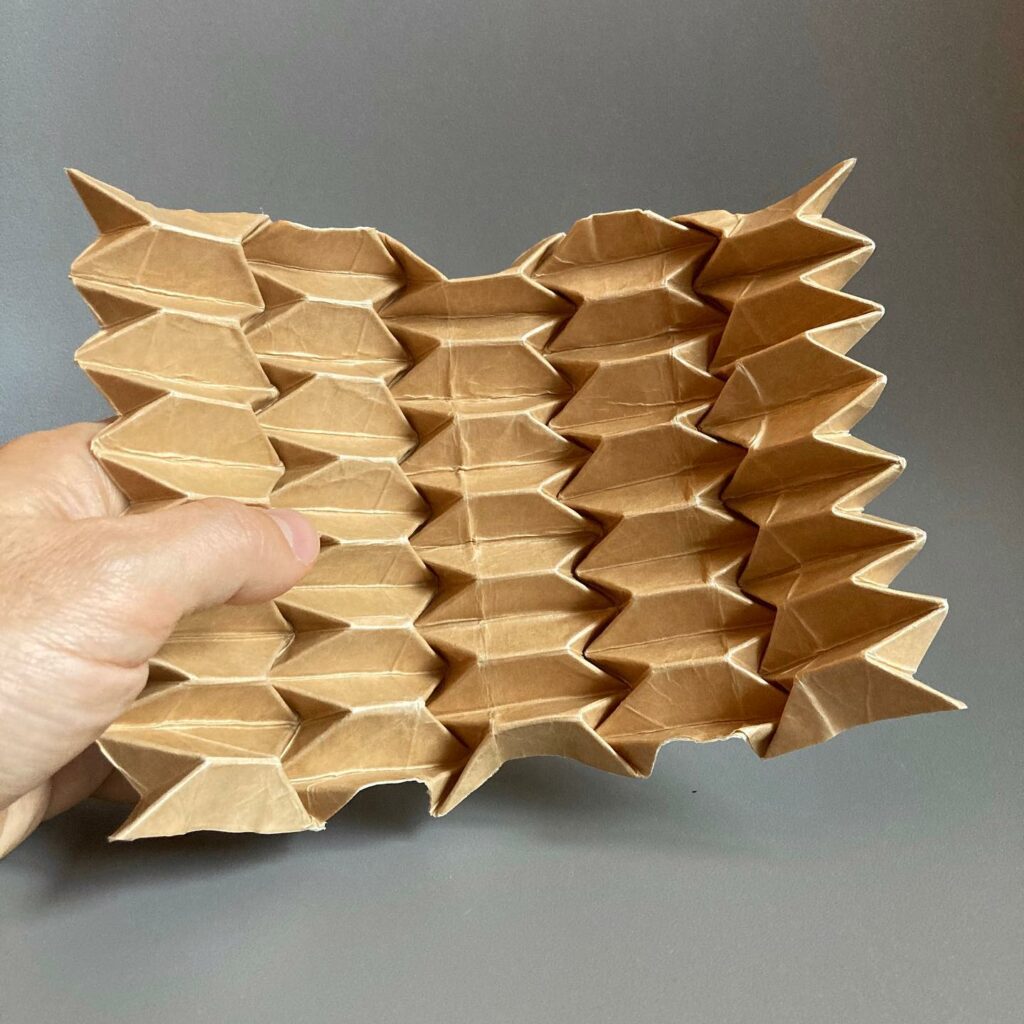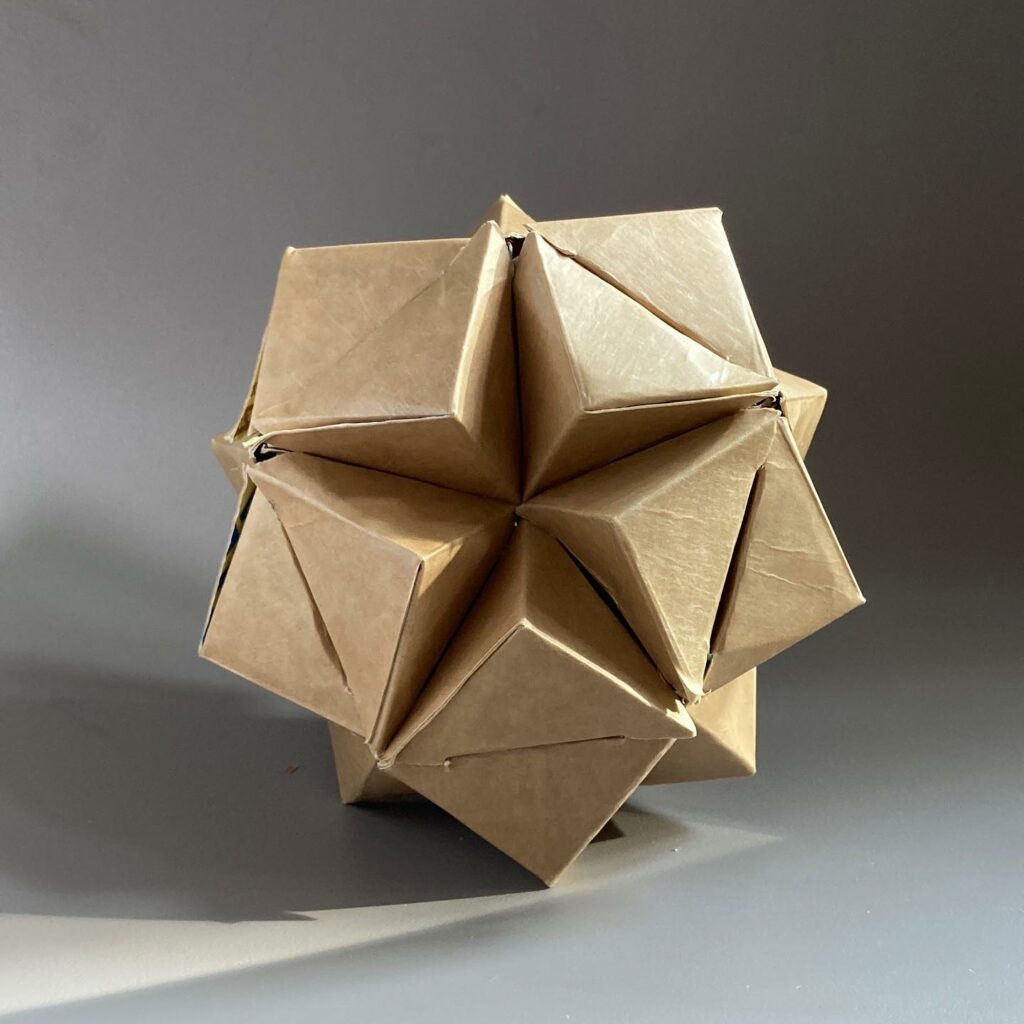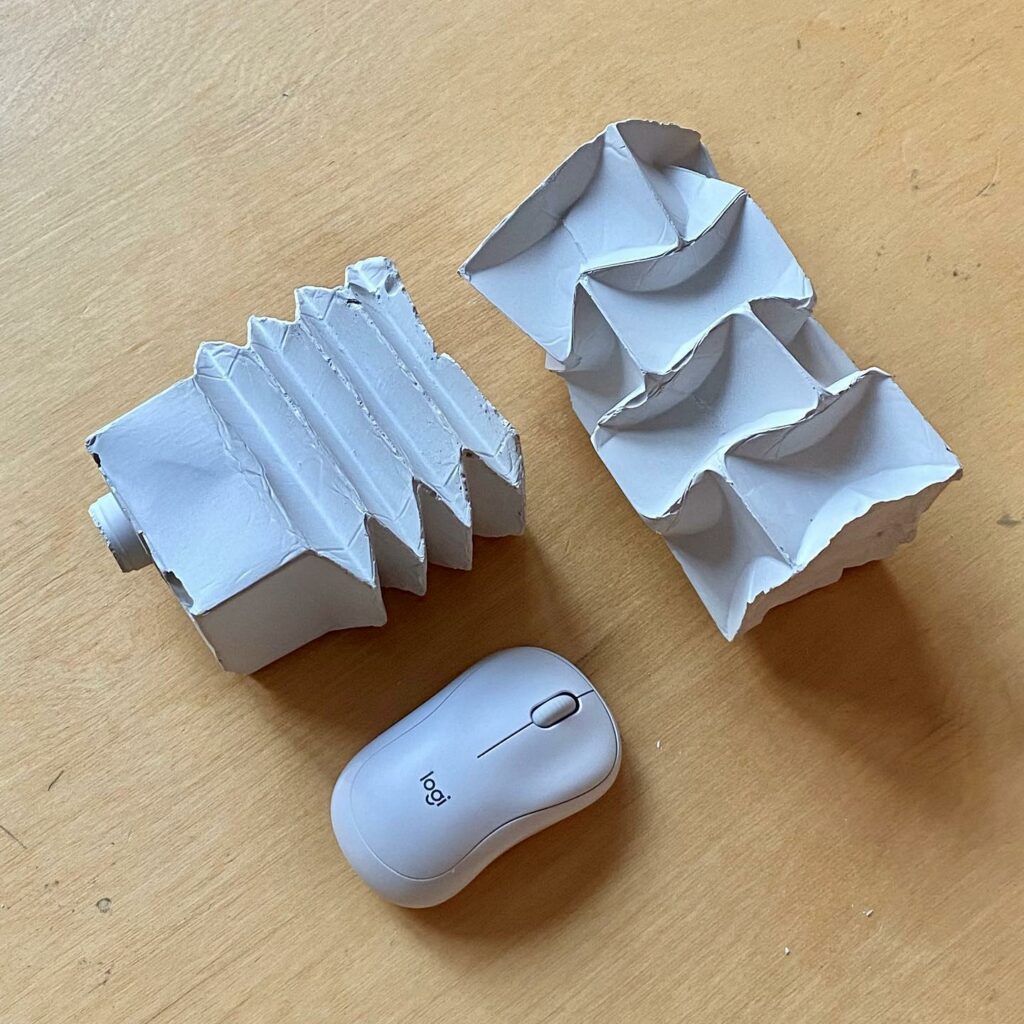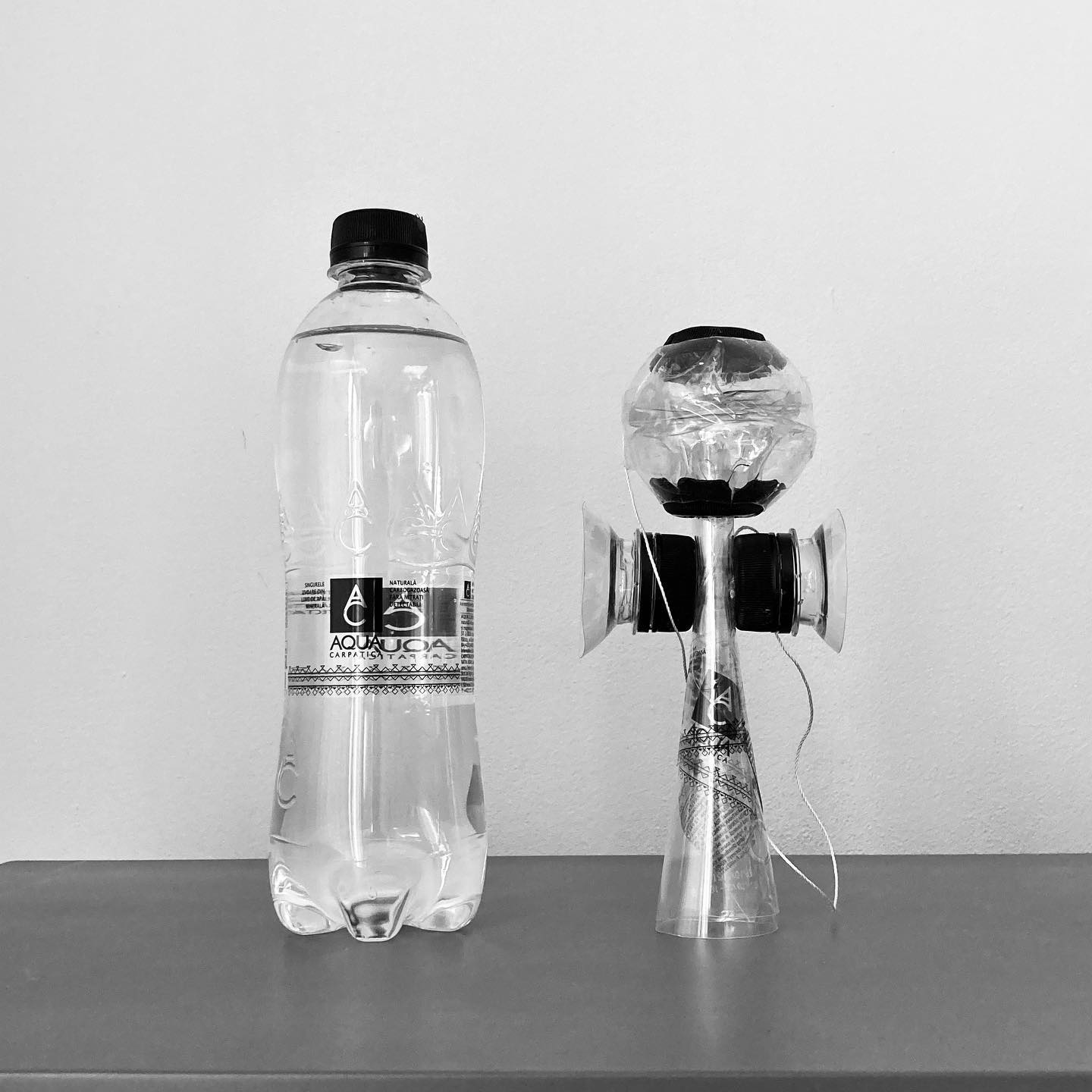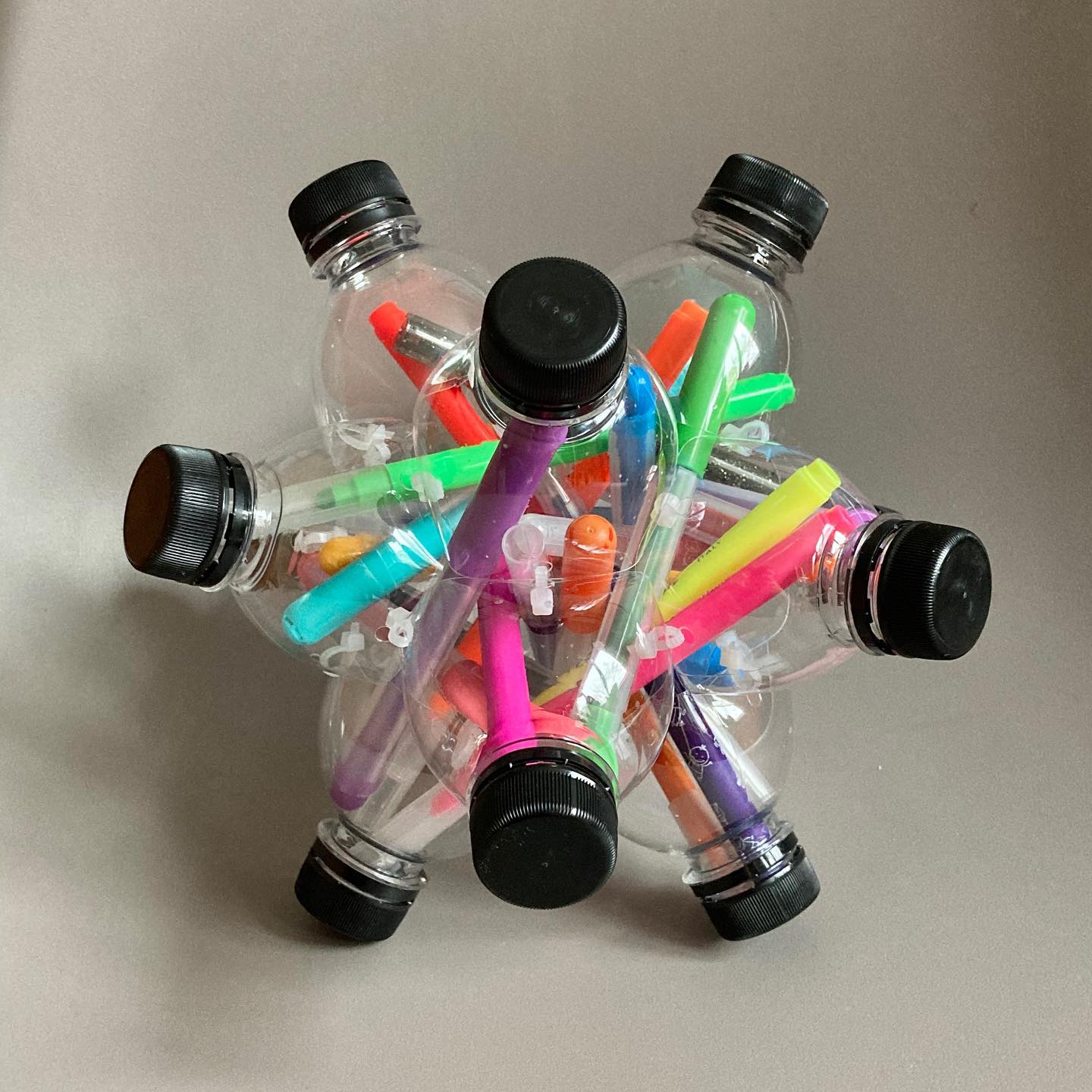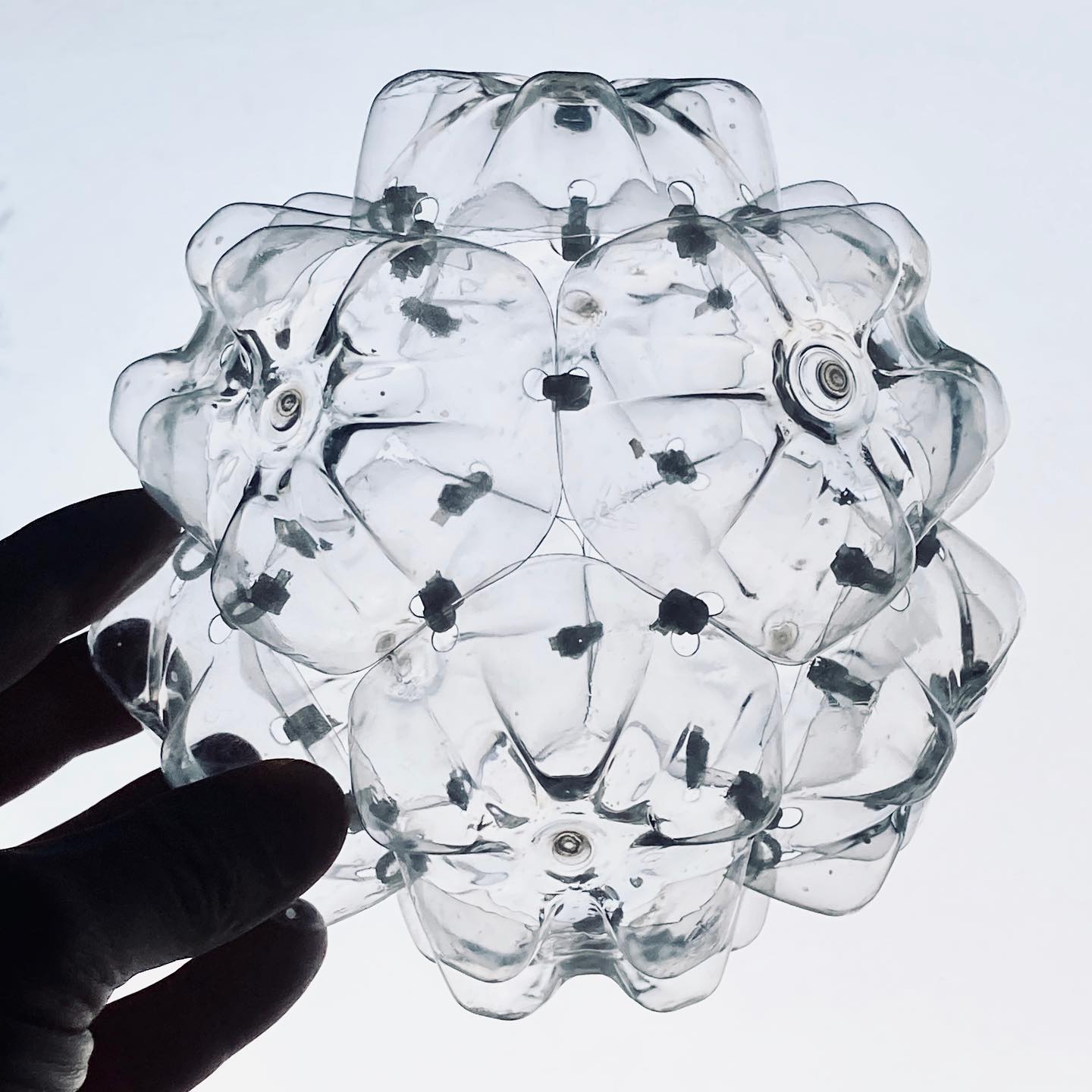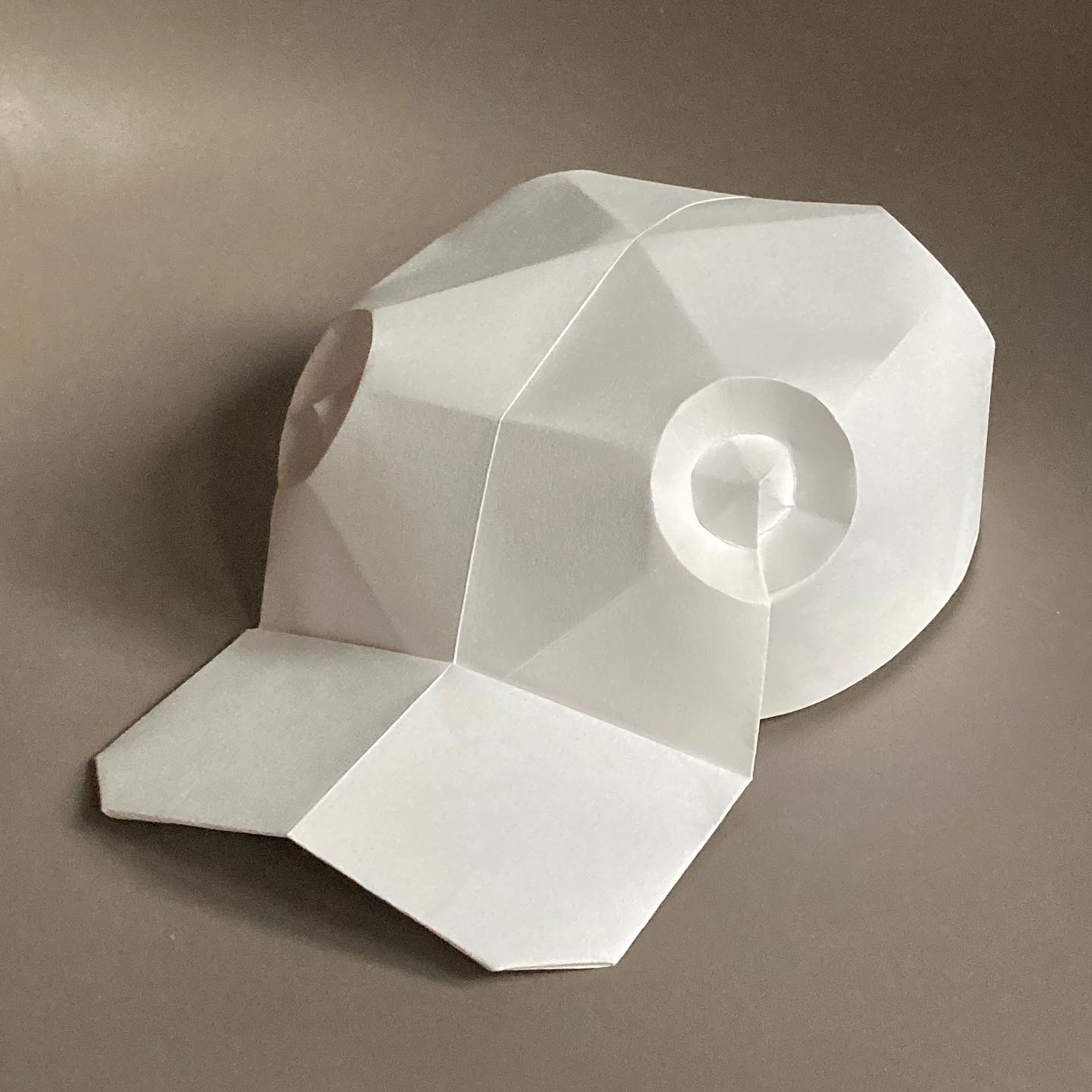He started by folding metro cards. Now, even the categories of projects Alexe Popescu started on Origami principles number in the order of tens. The play has become increasingly more serious and fertile, turning into a design program and philosophy. (Zeppelin)
Alexe Popescu has a dual academic formation (engineering and arts) and a professional track which combines graphic and product design. He co-authored, with Doru Someșan, the book RO-KIT – Romanian identity in 50 components. He is a book designer with the Publica publishing house and teaches Basic Design to 1st and 2nd year students (product and ambiental design) with UNARTE, where he is also enrolled for his PhD. He is studying the practical applications of folding techniques in design, technology, and upcycling.
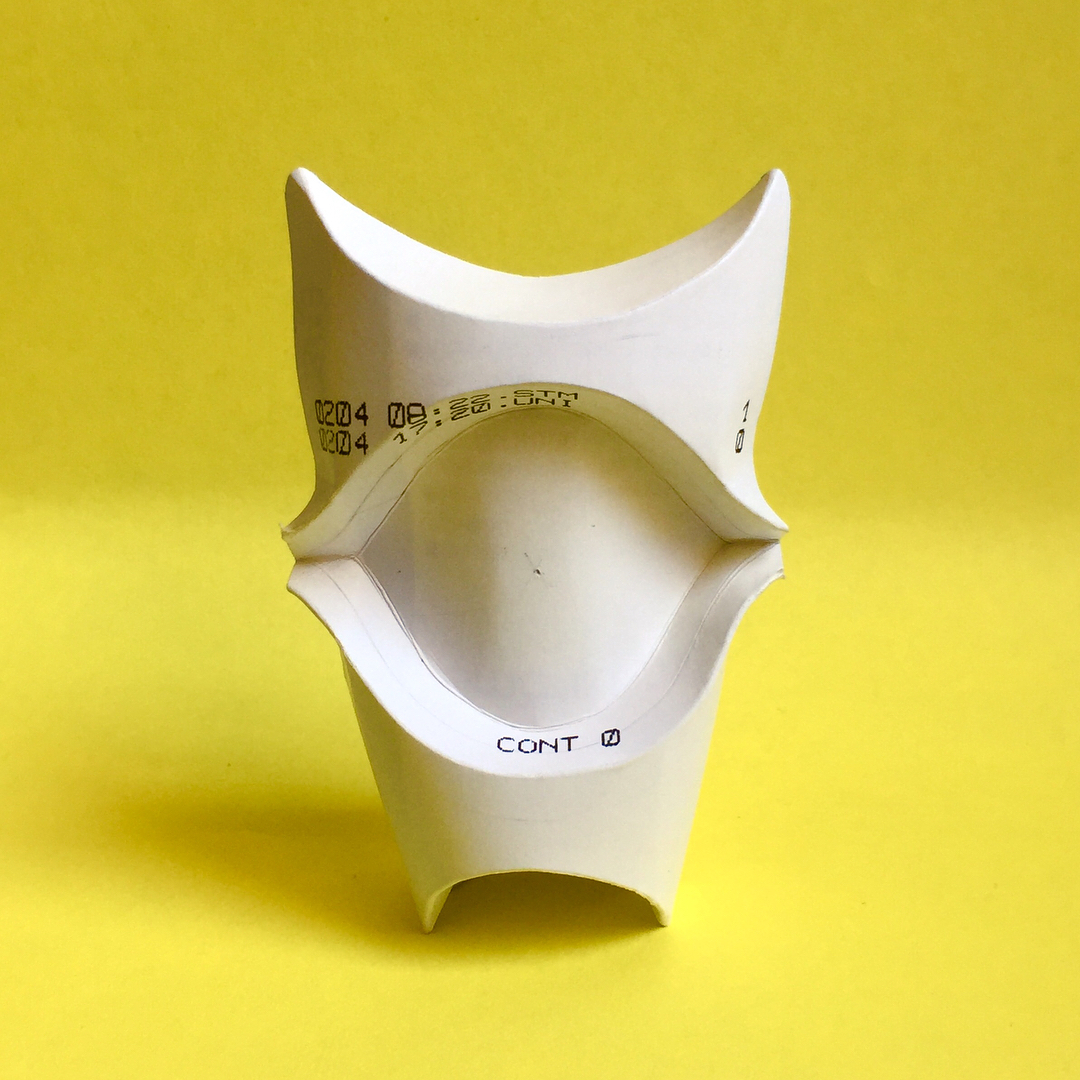 *A character (study of curved folding of a metrou card)
*A character (study of curved folding of a metrou card)
Text & photo: Alexe Popescu
The transformation, using minimum technology, of a bi-dimensional material into a functional tri-dimensional object has always been a challenge for me in product design. I used this principle to develop several projects, such as a stool made of A4 paper, which can hold at least 90 kg, a chair, table and coffee table, each made of a single piece of CNC-processed birch plywood (showcased in the Common Roots exhibition at the Holon Design Museum), or a wallet made of plasticized paper, punched out of a single sheet and only assembled by folding, sold in a few thousand copies.
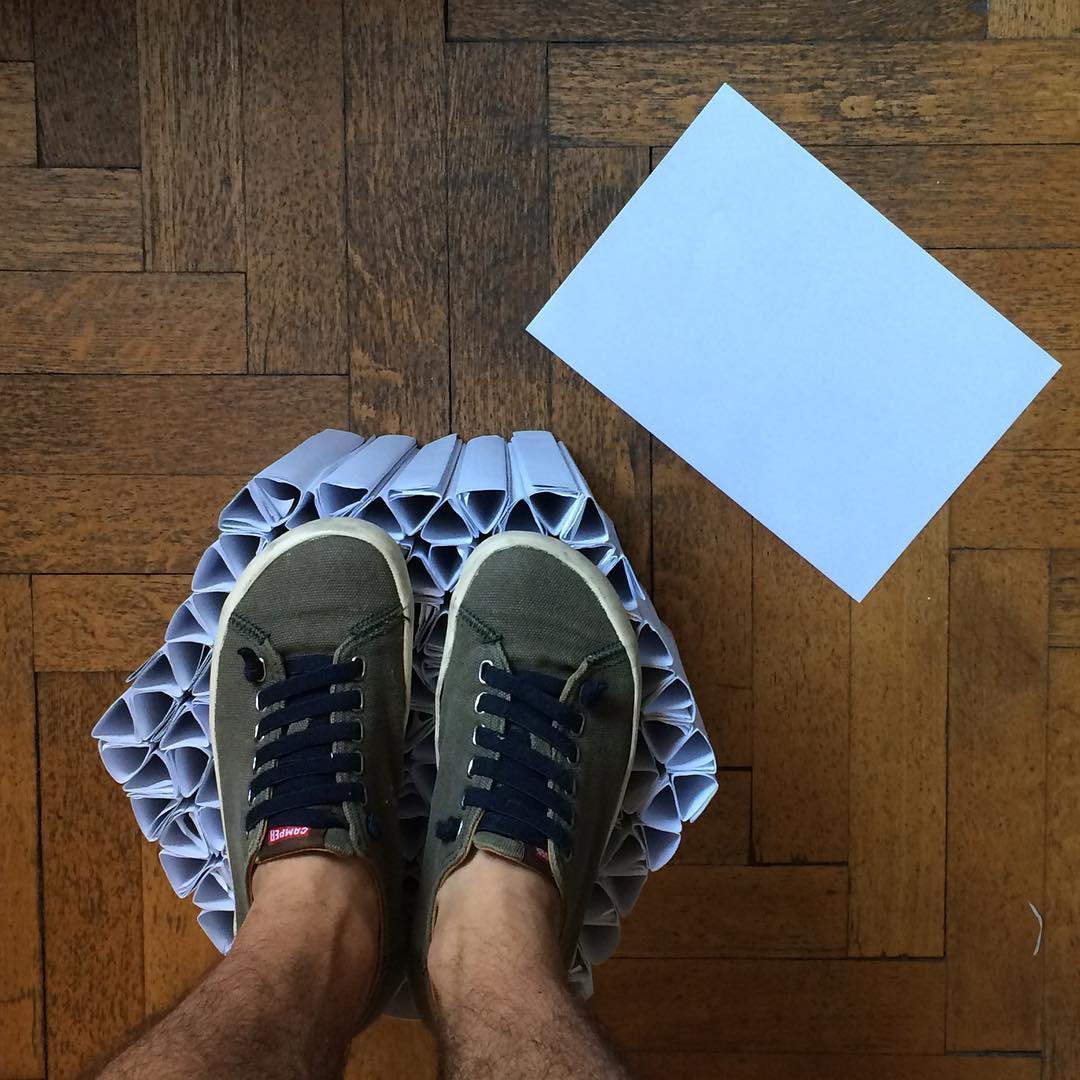
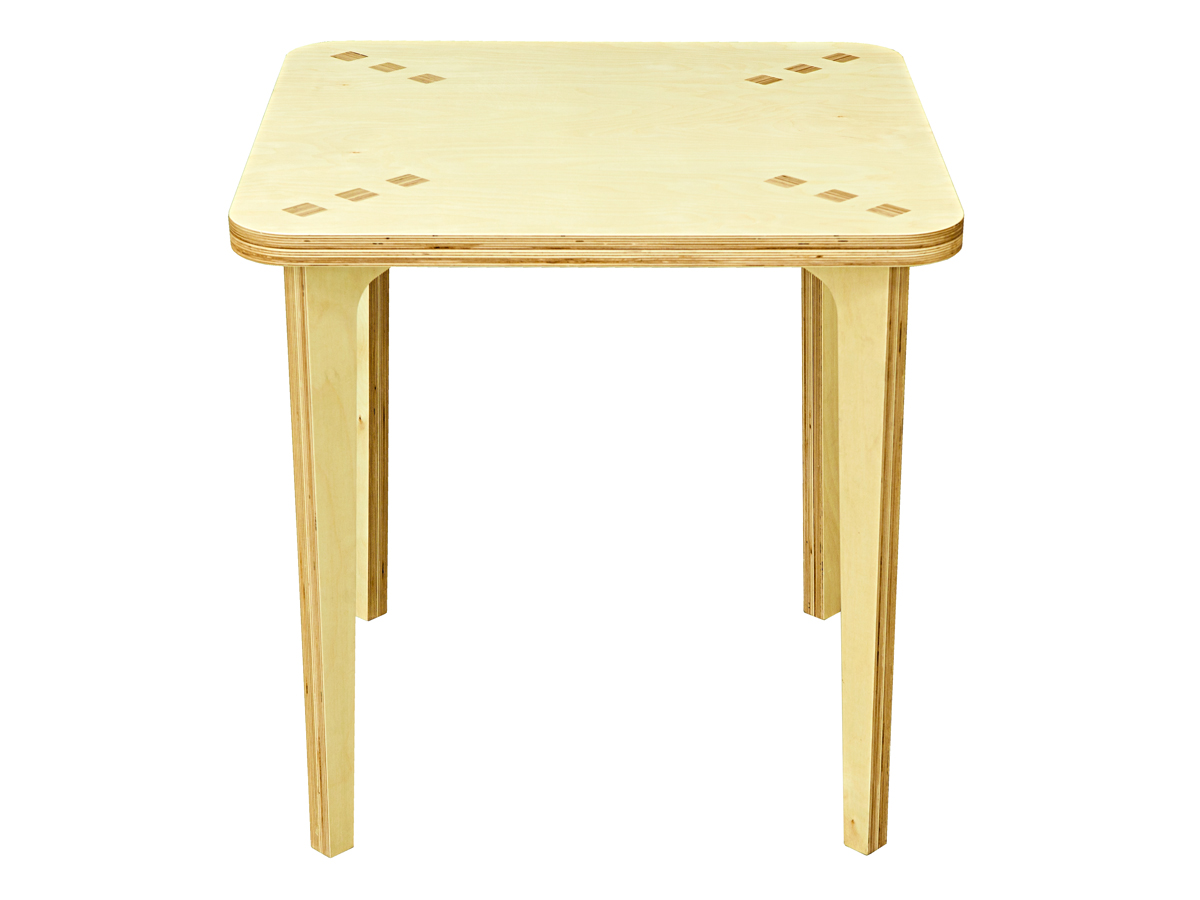
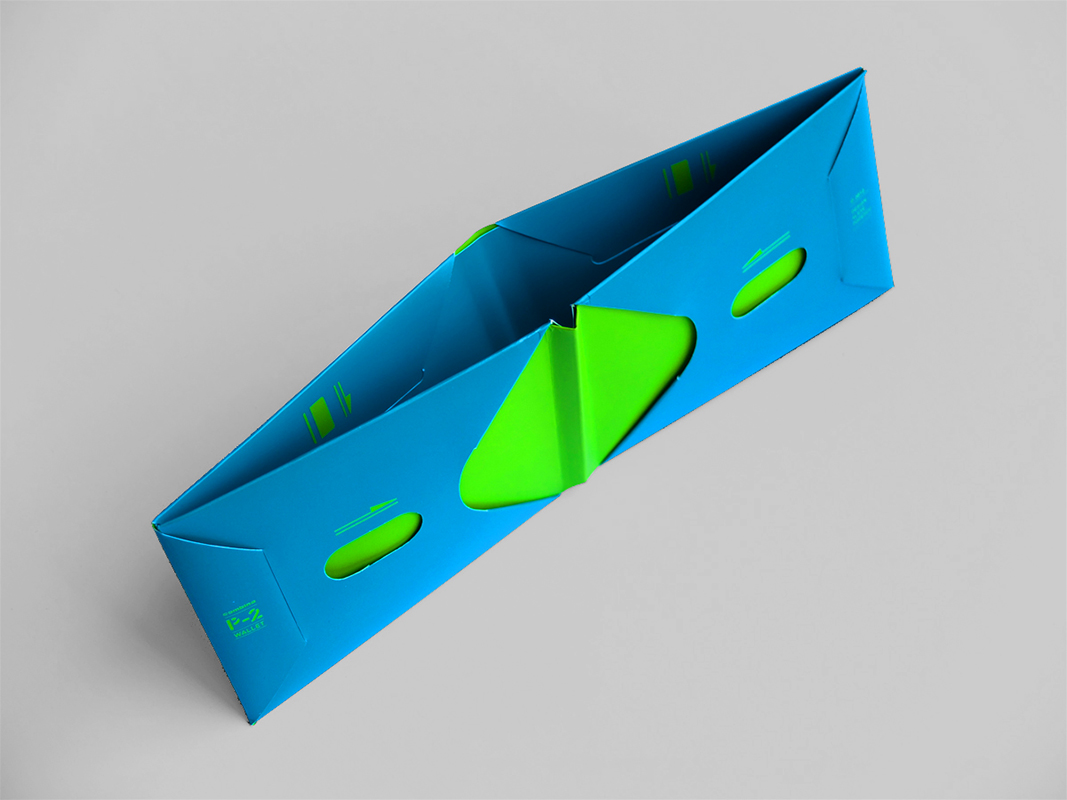 *From two to three dimensions: stool, Cookie table, wallet
*From two to three dimensions: stool, Cookie table, wallet
These experiences, together with my studies at the Polytechnical School and UNARTE, have led to my re-discovering Origami as an adult, then to triggering a passion to explore this fascinating field. It is currently applicable in increasingly varied fields, such as aerospace engineering, robotics, architecture, nanotechnology, medicine, product design, fashion, education, or therapy, due to the contribution of science and art personalities to its development and dissemination: Akira Yoshisawa, Joseph Albers, David Huffman, Ron Resch, Kōryō Miura, Robert J. Lang, Paul Jackson, Erik Demaine, Jeannine Mosely, Jun Mitani, Daniela Rus, Joseph Choma, Tomohiro Tachi, Tomoko Fuse, Shuzo Fujimoto and many others.
A special moment of my encounter with this domain was when visiting the Miraikan Centre – The National Museum of Emerging Science and Innovation of Tokyo, in 2008. This museum of Japanese high-tech also integrates (besides robotics clubs and other activities for children) an Origami club, where seniors meet up to passionately share discoveries about folding up various models.
My more serious approach to the Origami world happened in 2017, out of logistic reasons :-) I had started to travel more by metro and I discovered that the banal metro card (with the standard format of a bank card) was excellent for Origami. Its division into geometrical folding networks (orthogonal or 60-degree ones), with infinite possibilities (Akira Yoshisawa) to configure the final result, as well as the format size, allowing for folding even when lacking a rigid support, such as a table, have turned it into an extremely versatile creation environment. This card can even be folded when walking. I had a sort of slogan at the time: “Origami on the go, from the card on the metro”.
*Metrou card origami:
Owl-man, ratchet, ring, modular toy, a study for airport seats, phone stand, resort tesselation, a tribute to Brancusi’s Infinite Column
From figurative shapes (portraits, animals, spaceships), modular toys, rings, furniture or packaging studies, up to abstract tesselation-type geometric studies or dynamic structures (spinning tops) or elastic ones (springs), all have found this 2D-3D modelling environment to be a very expressive and stimulating one. I like to call it a portable modelling workshop. I even created a functional mobile phone holder, out of a single metro card.
Not last, this format also solves a classical issue for Origami afficionados: the storage volume of a large number of folded models.
When the pandemic started, the metro card consumption stopped. By spending time at home, I approached (this time, due to my daughters’ consumption of milk :) ) a new material, very interesting to fold: the Tetra pak. It is a bi-material (cardboard and plastic) in standard milk cartons or a tri-material (cardboard, aluminium, and plastic) for juices and UHT milk, and therefore a difficult one to recycle, as these components need to be separated in special machines. Thus, transforming this packaging, through folding, seemed like a good idea, integrated in the upcycling (circular economy) current, whereby packaging receives a new life at the end of its first functional cycle. Otherwise, the material is very resistant and has a pleasant texture on its waterproof, plasticized side. The texture is even more interesting (skin-like) if the material is crumpled up, flattened down, and then folded.
Thus, by experimenting with folding techniques on a Tetra pak or directly on a carton’s parallelepiped, I created a series of interesting objects out of this material, made without gluing or sewing: standard or card wallets, toys (functional car, spinning tops, dynamic games), variable-geometry modular polyhedra, pencil holders, trivets, two models of functional stools (including a folding one), and a few grips for robotic arms. I made an accordion-like folding of the box, which allows for maximum compaction of volume, turning it into a carry-on bottle. I have also used it as a pump for a paper rocket launcher and as a mould for gypsum shapes, and the results exceeded my expectations.
*Tetra Pak upcycling:
Card wallet, buggy cart model, double-handle pencil stand, modular tesselation, study of curved folding, modular polyhedron witha variable geometry, plaster cast in a Tetra Pak mould
Another material I used for different (modular or Origami) projects is the plastic bottle. Out of this material, I created various modular regulate polyhedra, a Kendama, a cup-like capturing system for robotic arms, a toy pencil holder, a spring using existing folding lines, and the design of bottles and various other accessories, also using the heat distortion of the material.
Permanently returning to paper (Origami’s traditional medium), during the pandemic I made two non-glued, non-sewn face mask models out of A4 printing paper, and I created two functional cap models from the A3 format, one with a reinforced structure through curved-line folding and another one, foldable (a pocket cap).
Here’s also a classification, according to various criteria:
1. Modular Origami (16)
2. Tesselation (16)
3. Portraits (56)
4. Origami mechanisms (30)
5. Robotic arm (4)
6. Toys (36)
7. Furniture – chair/stool/table (19)
8. Animals (36)
9. Boxes (12)
10. Phone holder (9)
11. Wallet (5)
12. Rigid Origami (4)
13. Medical masks out of A4 format (2)
14. Plastic/PET (13)
15. #tetrapakOrigami (48)
16. #creditcardsizeOrigami (300)
17. Cylinder folding (22)
18. Brancusi (Origami tribute) (4)
19. Kirigami (6)
20. Curved-line folding (20)
21. Metal/aluminium (4)
22. Ikea hacks (2)
23. Product design (16)
24. Cap made of A3 format (5)
25. Rings – Accessories (10)
26. Polyhedra (4)
27. Origami for ceramics (2)
28. Architecture (21)
29. Experimental – paper music (6)
30. Minimal folding (12)
31. Papier mache (5)
32. Most liked on Instagram (22)
33. Vegetal Origami (4)
34. Expo/Workshop Diploma (11)
A part of these “models” will enter the prototyping process on a scale 1:1 using articulated rigid or flexible materials, either recycled or organic.
The study on the applicability of Origami structures in product design is also the theme of my PhD thesis, currently in progress at the (IOSUD) Doctoral School – UNARTE – Bucharest, under the coordination of Prof. Dragoș Gheorghiu. The Origami, Kirigami and Kusudama techniques are also highlights in the Basic Design course I teach at UNARTE at the product design and ambiental design departments, 1st and 2nd year.
I had a very interesting experience during the ‘Upfold’ (Upcycling +Folding) workshop I held on 10.10.2021 within the 2021 Diploma Festival. The purpose of the workshop was to transform various packaging materials, through folding and cutting (without gluing), into functional objects, selected from my portfolio. Thus, attendees could discover how to turn Tetra pak cartons into pencil holders or wallets, metro cards into phone holders or A3 paper sheets into caps. Throughout the festival (8-17.10), visitors could access a permanent ‘upcycling lab’, where they could create two of these objects, by using printed Origami-type patterns.
The event also included an exhibition throughout the festival. The exhibited projects are the results of my personal explorations within the applicability of Origami folding techniques to product design, focusing on upcycling, and, respectively, packaging ‘repurposing’ upon the completion of its first functional cycle. The 40+ objects exhibited cover various product design areas: personal accessories (cap, wallet, card holder, jewellery, mask), smartphone holders, stool, toys (ball, kendama, cars), kitchen accessories, office articles, flexible structures. The raw material used are Tetra pak cartons, metro cards, plastic bottles, cans, A4/A3 paper, cork. The project was carried out with the support of ASAP Romania and The Institute.
I would like to continue with a similar project, this time aimed at children in primary, secondary and high school education cycles. “Green” culture, experimented at very young ages, can help raise generations of more responsible adults, on one hand, and the presentation of product design notions in schools may increase young people’s attraction to this field.
The full archive (over 500 posts) can be accessed on my Instagram account.

